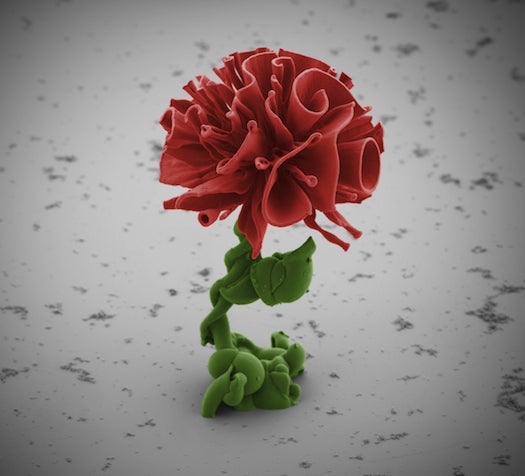These Self-Assembling Nanoflowers Are As Beautiful As They Are Tiny
Harvard researchers grew these lovely microscopic gardens using delicate chemical reactions.

Click here to enter the gallery
A nanorose may not smell as sweet as an organic one, but the red petals on this micron-scale flower are unquestionably just as beautiful. At Harvard University, materials scientists have perfected an underwater chemical reaction that results in these gorgeous, self-assembling nanoflowers.
The microscopic structures are crystals that build themselves, one molecule at a time, on a glass surface submerged in a beaker of water, barium chloride, and sodium silicate. When carbon dioxide from the air naturally dissolves in the water, it sets off the chemical reaction that causes the crystals to form.
Though the colors in these images are artificial, the intricate shapes of the nanoflowers are very real. The twists, curves, and ruffles are created when the scientists shift the components of the chemical reaction; the crystals naturally “grow” toward or away from various chemical gradients. For example, the broad-leaf shapes you’ll see in the gallery formed in solutions with extra carbon dioxide.
“When you look through the electron microscope, it really feels a bit like you’re diving in the ocean, seeing huge fields of coral and sponges,” says Wim L. Noorduin, a postdoctoral fellow at Harvard and lead author of the paper in Science. “Sometimes I forget to take images because it’s so nice to explore.”





